Hong Kong’s natural topography makes it a great place for hiking, as rugged mountains roll smoothly into coastlines on the mainland and outlying islands. From waterfalls and natural infinity pools to uninhabited beaches and difficult trails, there are trails of all levels for any kind of hiker.
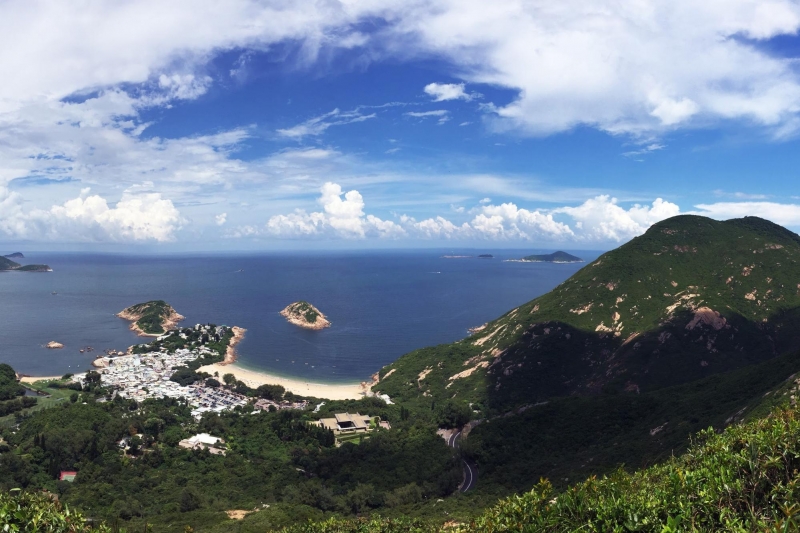
Two summers ago, I headed to the Dragon’s Back hiking trail with a couple of friends. Famous for its panoramic views, the Dragon’s Back is a ridge that overlooks spectacular coastal scenery and is easily accessible by bus from the urban centre.
We took a bus to the drop-off point and headed up into the ridge. After a short trek through tree tunnels and a mixture of steps and dirt paths upward, the trail opened into a rolling path on the tip of the mountain range, and the hike was an easy stroll along the Shek O Peak. This is the most famous part of the trail, as the vantage point at the peak offers a wonderful scope of coastal town scenery, forest greenery, and a sea view that extends into a vanishing point.
We were one group amongst a few that were braving the Dragon’s Back on a hot summer’s day. Amongst the undulating hills, hikers appeared and disappeared sporadically from the eye, stepping in and out of the saturated colours of a summer day. The early afternoon heat was sharp and piercing, but a sea breeze coming in from the coast and periodic shade from tree tunnels extending over the hiking path brought relief.
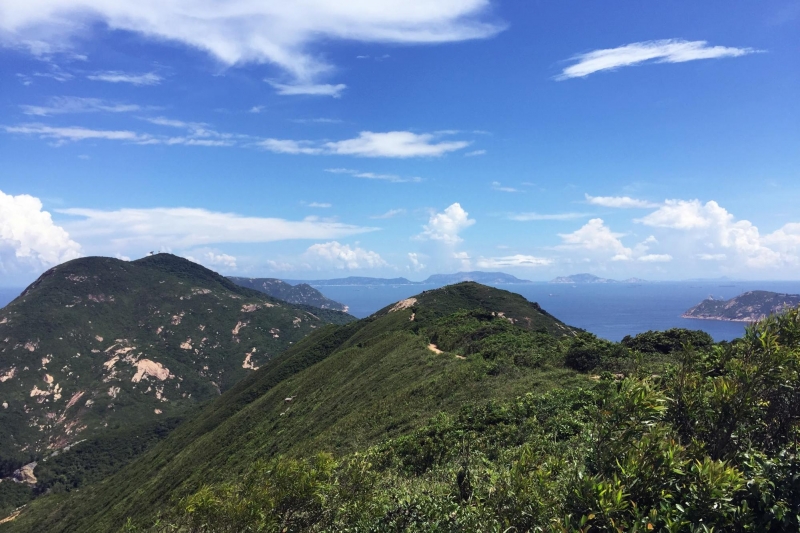
The ridge stretch of the hike including the trek leading up to it takes around 60-90 minutes depending on your pace. After this, the path winds down into the mountains and you can exit, and take a bus or taxi out, or keep walking. We continued into the forest trail, which winds for another three hours, crossing waterfalls and streams, under lush canopy and a diverse display of insects, all the way down into the beach. Under the trees and amongst running water, the temperature dropped drastically and the summer heat from the mountaintop seemed a distant thing. Earlier, we had taken to covering the tops of our heads with towels to prevent sun-scorched scalps. Now, in the forest trail, those towels were rinsed in the streams and relieved our heads from the sweat accumulated in the giddying heat.
The trail eventually opened up into a small town, residential homes and alleyways mixed in with shop fronts cluttered with swimming gear, flotation devices, ice cream and frozen fruit. We walked down to the beach, kicked off our hiking shoes and waded thigh high into the water, joining other beachgoers in fighting off the heat.
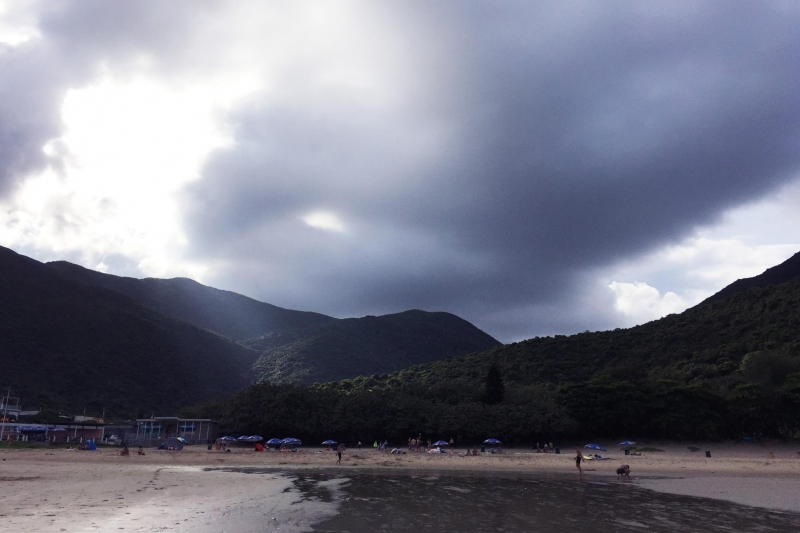
More recently, this past winter, our family decided to go on a Christmas Day hike through Tai Mo Shan to see the Ng Tung Chai waterfalls. Unlike the Dragon’s Back, the hiking path for this trail is notably more difficult – requiring extra support and shoes with good grip. We didn’t intend on going all the way up Tai Mo Shan, which at 957m, is the highest peak in Hong Kong, but wanted to see the waterfalls within the park.
The early part of the trail led past an old temple, a grand village gate, large sprawling houses and plots of farmed land. Much of the walk is comprised of eroded dirt and rock staircases, which makes for a difficult hike if you’re not used to moving muscles in that way. However, the exercise was enjoyable in the lower temperatures of a 10°C Hong Kong winter, amongst the quiet of morning sunlight dappled across the floor through tree leaves. On the way in, we passed a number of regular hikers, geared up and returning from their usual trekking runs or paths. But for the most part, the trail was relatively quiet.
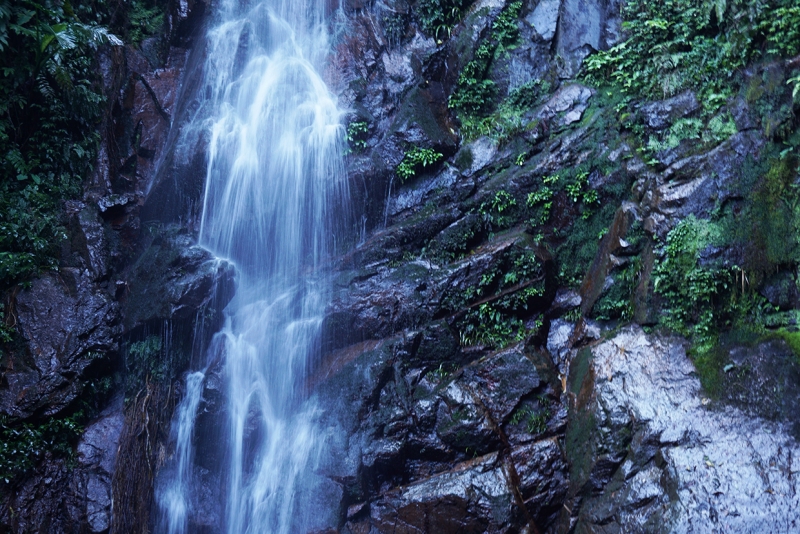
The trek to see the falls alone took three hours, mostly through steep uphill inclines. Continuing the trek up Tai Mo would have taken the greater part of the day, so after the falls, we turned back. The trail was mostly tunnelled by forest, littered with fallen trunks and vines, shallow caves, and the sound of water flowing. Walking paths narrowed sharply at places, with steep sloping drops down into the mountain and thick foliage. The tones were desaturated greys, greens and browns, faded and blurring into each other. Compared to Dragon’s Back, Tai Mo felt older, more overgrown and still, but with an earthy charm.
Due to a dry spell, one of the falls was not running, but the other two we did see were pristine flows into pools that would be perfect places to dip for a quick swim during the summer. In the cool air, the Bottom and Middle falls were particularly cool and refreshing, rushing in the bold way of all waterfalls. There were many sitting spots to eat a snack, enjoy waterfall-flecked air, and the sound of water against rock before continuing on our way: large rocks smoothed over time by running water, dry tree trunks, the warm stone stairways cut into the earth.
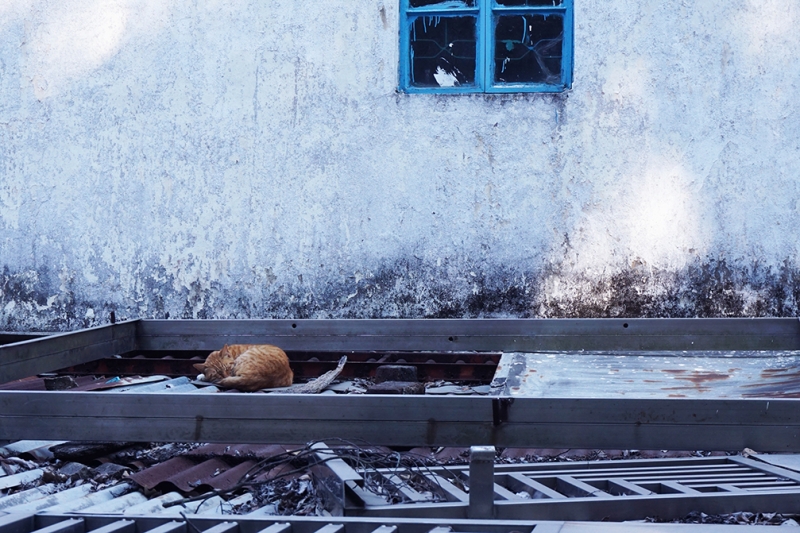
This part of Hong Kong is still home to many small villages with clan leaders, traditional building structures, and an older way of life. Compared to the bustle of the Dragon’s Back surroundings, the roads leading to Tai Mo were emptier and slower. Our hike ended in a sleepy small village with fluttering coloured flags, tangles of house-grown potted plants, and a comfortable walk back to the bus stop. Along the way, we passed an orange cat curled up on the corrugated metal of a village house roof, napping in the afternoon silence. It was another kind of Hong Kong we enjoyed that morning; an older and slower one.




